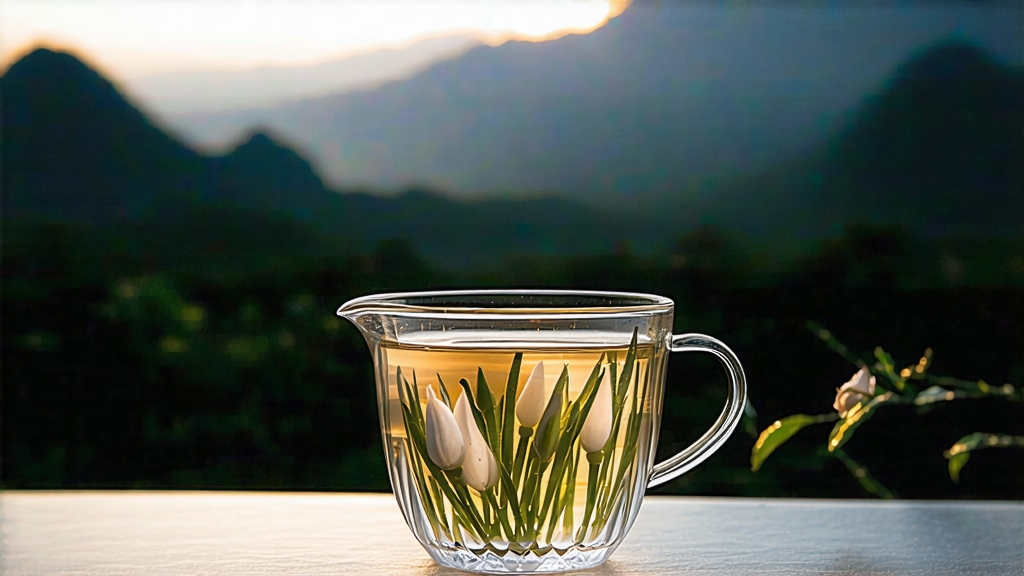
Among the six great families of Chinese tea, white tea is the least theatrical yet the most elusive. It is not rolled, not roasted, not kneaded into dramatic shapes; instead it is simply allowed to be. Of its minimalist triad—Silver Needle, White Peony, and Shou Mei—Bai Hao Yin Zhen, literally “White Hair Silver Needle,” sits at the apex: the single-origin, single-bud expression of tea’s quiet genius. To understand China’s most aristocratic leaf, one must step into the pre-dawn coolness of northern Fujian’s Taimu and Tai Lao mountains, where the air smells of river mist and wild orchids, and where tea farmers speak of “harvesting the moonlight.”
History: from imperial elixir to global muse
The first written record of white tea appears in Song dynasty treatises (960-1279), but those leaves were compressed cakes sent north as tribute; they bore little resemblance to today’s needle-shaped buds. The modern form emerged during the mid-Qing, when Fuding and Zhenghe counties perfected the craft of sun-withering unopened leaf buds. Legend claims that Daoist hermits noticed silver-white down on dormant tea bushes after the Mid-Autumn full moon; believing the buds absorbed lunar yin energy, they plucked them at dawn before the sun’s yang could dilute their purity. By 1796 the buds entered the imperial court, wrapped in silk and stored in porcelain jars sealed with lotus leaves. European merchants encountered the tea in Canton during the 1850s, mislabeling it “Pekoe Tips” and shipping it to London salons where its honeyed delicacy enchanted Victorian hostesses. In 1891 Silver Needle won the highest award at the Melbourne International Exhibition, and in 1915 it repeated the triumph at San Francisco’s Panama-Pacific Expo. Yet fame never industrialized the tea; even today 80 % of genuine Silver Needle still comes from micro-gardens under 2 ha, many reachable only on foot.
Terroir: why Fujian clouds taste like apricot
White Hair Silver Needle is legally protected under China’s Geographic Indication system; authentic material must be picked within Fuding, Zhenghe, Jianyang or Songxi counties. The region’s hallmark is a subtropical maritime monsoon climate: 1 800 mm annual rainfall, 78 % average humidity, and acidic lateritic soil rich in red granite debris. Crucially, 220 foggy days per year filter sunlight into a soft, diffused glow ideal for slow photosynthesis. The indigenous cultivars—Fuding Da Bai Hao and Zhenghe Da Bai—develop buds that are 25 % longer and 40 % plumper than standard Camellia sinensis var. sinensis, their surfaces densely coated with trichomes that shimmer like frost. These microscopic hairs are reservoirs of amino acids, particularly L-theanine, which translates into the tea’s signature umami-sweet broth.
Harvest calendar: the art of the perfect bud
Plucking begins when daily temperatures stabilize between 13-20 °C, usually from 15 March to 10 April. Only the unopened phoenix eye bud—so called because the tiny leaf tip resembles a closed eye—is acceptable. Standards dictate “no stem, no leaf, no rain, no dew”; buds must be picked within 48 hours of the “Qingming” tomb-sweeping festival to guarantee the highest white-down density. Experienced pickers can gather just 500 g of fresh buds per hour; 30 000 buds are required for one liang (50 g) of finished tea. To preserve cell integrity, baskets are woven from thin bamboo slats and lined with fresh banana leaves; plastic is forbidden because it traps heat and initiates premature oxidation.
Craft: doing almost nothing, at the right moment
White tea’s minimalism is deceptive; the absence of manipulation means that timing and microclimate must be perfect. The traditional route is pure sun-withering: buds are laid on water-reed trays 1 cm thick and placed on mountain ridges where a 0.5 m/s breeze circulates. For eight hours the leaf moisture drops from 78 % to 45 %; turners use feather fans every 30 minutes to ensure even exposure. If clouds gather, trays are swiftly slid into translucent bamboo huts where charcoal brazettes maintain 28 °C and 65